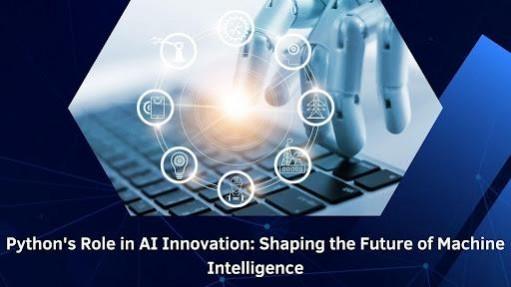
In the ever-evolving digital landscape, the intersection of Python and Artificial Intelligence (AI) has revolutionized the way machine learning and data science evolve, making complex computational tasks more accessible. Srinivas Sriram Mantrala, an Avid learner, highlights Python's transformative impact on AI development. His insights explore why Python has emerged as the dominant language, powering advancements in deep learning, natural language processing, and predictive analytics.
The Power of Simplicity: Python's Accessibility Advantage
Python's intuitive syntax and readability lower the entry barrier for AI enthusiasts and seasoned developers alike. Unlike traditional programming languages that require extensive coding, Python streamlines AI development by reducing code complexity. Its ease of use allows developers to focus on designing sophisticated algorithms rather than navigating language intricacies, accelerating the adoption of AI technologies across industries.
A Rich Ecosystem: Libraries Driving AI Innovation
The extensive ecosystem of AI-centric libraries makes Python a preferred choice for machine learning and data science. Frameworks like TensorFlow, PyTorch, and Scikit-learn have become indispensable, providing ready-to-use solutions for deep learning and predictive modeling. These libraries enable rapid prototyping, allowing researchers and developers to iterate AI models efficiently, leading to faster innovation cycles.
Speeding Up Development: Rapid Prototyping and Iteration
The ability to test, modify, and deploy AI models quickly is crucial in today's fast-paced technological landscape. Python's scripted nature enables rapid iteration, significantly reducing the time required for debugging and refining AI algorithms. This rapid development process enhances research efficiency and shortens the development timeline for AI-powered applications.
Seamless Integration: Python's Cross-Platform Compatibility
Python's cross-platform capabilities enable AI applications to function seamlessly across various environments, from local development setups to large-scale cloud deployments. This flexibility is particularly valuable as AI continues to integrate with diverse hardware architectures, ensuring that machine learning models perform efficiently regardless of the underlying computing environment.
Revolutionizing AI Applications: Python's Role in Revolutionizing AI Applications
Natural Language Processing (NLP): Bridging Human-Machine Interaction
Python has played a pivotal role in advancing NLP, enabling machines to process/understand/generate human language. With libraries like spaCy and NLTK, developers can create sophisticated language models for applications such as chatbots, sentiment analysis, and automated translation systems.
Deep Learning: Fueling AI's Neural Networks
Python's dominance in Deep Learning is evident through its integration with powerful neural network frameworks. By simplifying the implementation of complex AI models, Python enables efficient model training, optimizing performance on large datasets and high-performance computing clusters.
Computer Vision: Transforming Image Recognition
AI-driven image recognition and object detection have significantly improved due to Python-based frameworks like OpenCV. These advancements have led to breakthroughs in medical diagnostics, security systems, and autonomous navigation, showcasing Python's versatility in handling visual data.
Predictive Analytics: Enhancing Decision-Making
Python's statistical modeling capabilities power predictive analytics, helping businesses and researchers derive insights from vast datasets. With streamlined workflows and seamless integration with big data platforms, Python facilitates informed decision-making through machine learning-driven forecasts.
The Future of AI with Python
As AI technologies evolve, Python continues to adapt, driving advancements in automation, reinforcement learning, and explainable AI. Its role in AutoML has democratized machine learning, making AI model development more accessible to non-experts. Python's growing influence in edge computing further strengthens its position as the universal language of AI, enabling intelligent applications to run efficiently on resource-constrained devices.
In conclusion, Python's influence in AI development is undeniable, bridging the gap between human intelligence and machine learning. Its simplicity, extensive library support, and adaptability have cemented its status as the go-to language for AI practitioners. As highlighted by Srinivas Sriram Mantrala, Python's continued evolution ensures its place at the forefront of AI innovation, shaping the future of intelligent computing for years to come.















